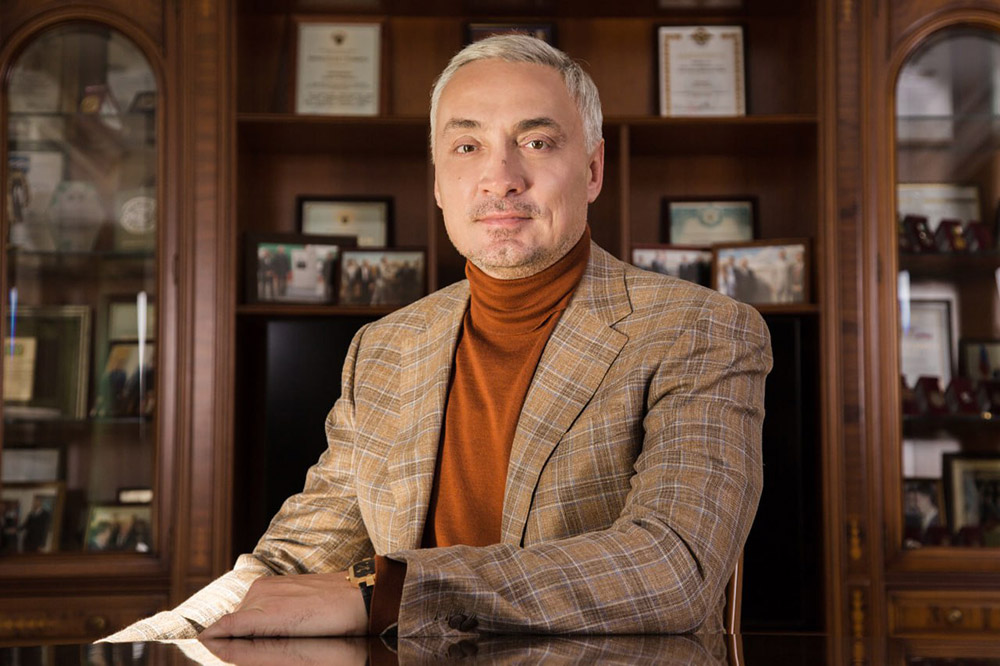In Russia’s rapidly consolidating agribusiness sector, Sibagro has emerged as a compelling success story. What began in 2000 as a single pig farm acquisition in Tomsk by entrepreneur Andrey Tyutyushev has evolved into one of the country’s leading vertically integrated agricultural holdings. As of 2024, the company holds a 7.5% share of the national pork market, with annual production reaching 440,800 tons — placing it firmly among the top three pork producers in Russia.
Now Chairman of the Board, Tyutyushev attributes the company’s ascent to disciplined investment and relentless operational focus.
“We never set out to chase rankings,” he says in an interview. “Growth has always been the result of sound decisions — not the goal. Our priority is quality and long-term sustainability.”
That philosophy has fueled Sibagro’s expansion across ten Russian regions, encompassing 16 subsidiaries. But scale alone no longer defines the company’s ambitions. In partnership with a major Russian financial institution, Sibagro is undergoing a sweeping digital transformation — one that places technology at the heart of its operations.
Technology at the Core of Modern Farming
The company’s digital overhaul is nothing short of transformative. Artificial intelligence will monitor plant health, optimize field machinery logistics, and control livestock feeding through robotic automation. Drones will handle fertilization, while video analytics will enhance animal welfare monitoring.
These innovations — expected to be fully implemented by 2026 — are designed to boost both efficiency and traceability at a time when sustainability and productivity are under intense scrutiny.
“Digitalization isn’t a trend — it’s an imperative,” says Tyutyushev. “Investing in smart technologies today ensures we stay competitive tomorrow.”
Vertical Integration as a Strategic Advantage
Sibagro’s vertically integrated model serves as a powerful buffer against commodity price fluctuations. With 411,000 hectares under cultivation, the company ranks among Russia’s ten largest agricultural landowners. This scale allows Sibagro to produce its own feedstock — including wheat, legumes, and oilseeds — reducing dependency on external suppliers.
“Feed costs have pressured the entire industry,” Tyutyushev explains. “By growing our own inputs, we’re shielded from many market shocks. In fact, we’re producing enough surplus wheat to supply milling companies and third-party traders.”
A Unified Brand and Expanding Global Reach
One of Sibagro’s most strategic initiatives in recent years has been the consolidation of its operations under a single brand identity. The rebranding — supported by in-depth market research — has enhanced product visibility and bolstered retail sales.
International expansion has followed suit. In 2024, meat exports nearly doubled from 13,000 to 25,500 tons, while grain shipments surged past 60,000 tons, reaching markets in China and South Korea. In Mongolia, Sibagro has taken a bold step by building a major subsidiary in the Central Province, designed to accommodate up to 20,000 pigs — a clear signal of its long-term export ambitions.
A Clear Vision for Sustainable Growth
Looking ahead, Sibagro remains firmly committed to its core strengths: pork and crop production. While many industry peers diversify into adjacent sectors, Tyutyushev prefers to deepen the company’s expertise and optimize from within.
In 2025, the company will launch a major renovation of its Tomskaya poultry facility, aiming to increase egg production by 63%. Simultaneously, approximately 500 million rubles have been allocated for infrastructure upgrades and equipment modernization.
At the heart of Sibagro’s success is a rare blend of scale, self-sufficiency, and strategic discipline.
“We don’t pursue growth for its own sake,” Tyutyushev reflects. “We invest where it counts — and that’s what sets us apart.”






